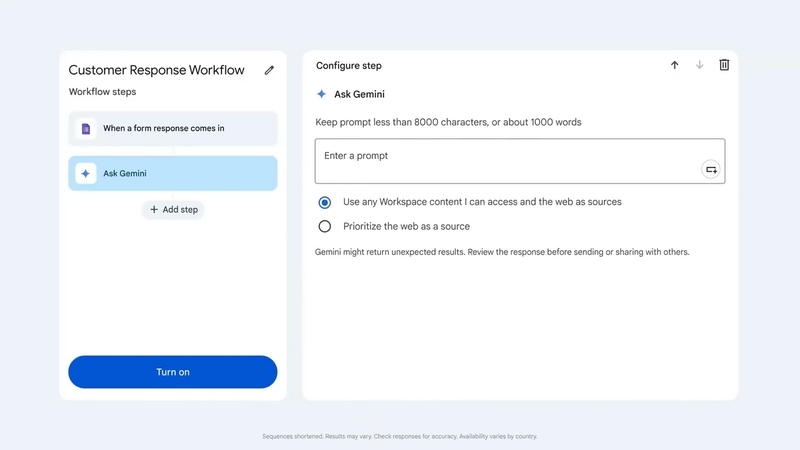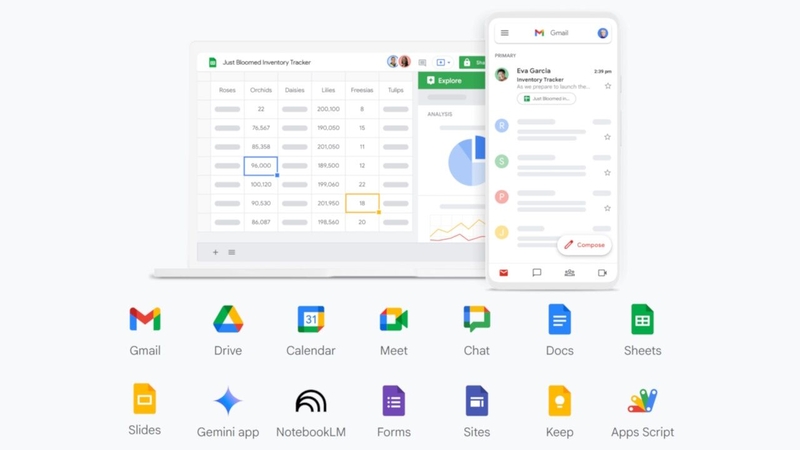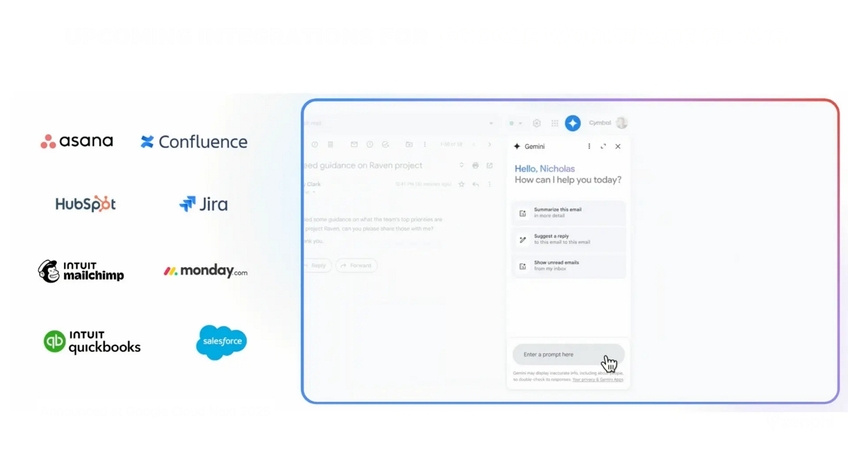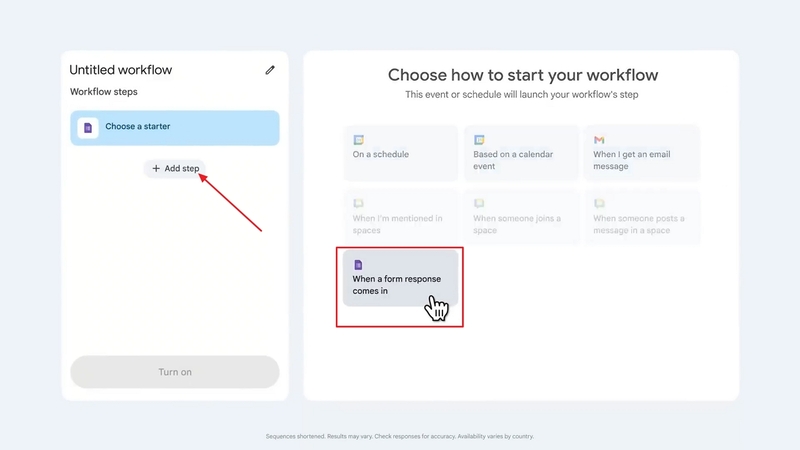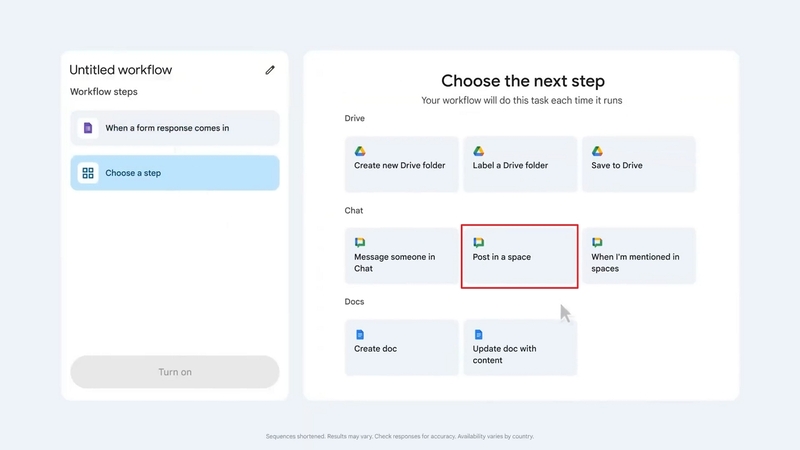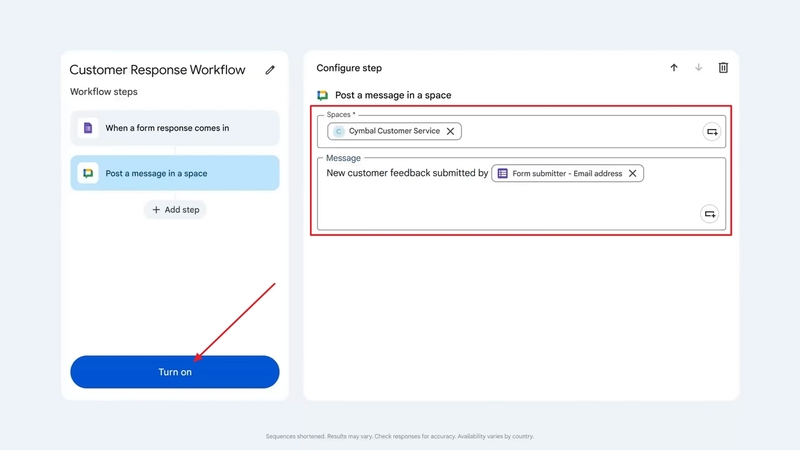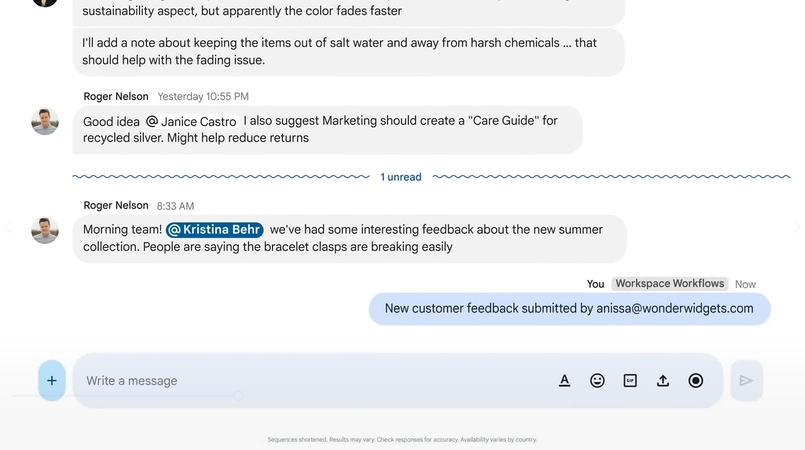Ultimate Guide to Mastering Workflow Automation with Google Flow
In 2025, almost every business and corporate professional manages their daily tasks, approvals, and processes in a digital workspace. As business automation tools become a necessary business need, there is a load of workspace platforms on the internet that help users manage their responsibilities. Among all platforms, Google Flow stands out with direct integration across Google Workspace apps and cloud services.
In this guide, you'll learn about Google Flow and advanced workflow strategies, including process flow in Google Sheets, Docs, Drive, and more. Whether you're managing multiple projects or automating approvals, this guide covers everything you need.
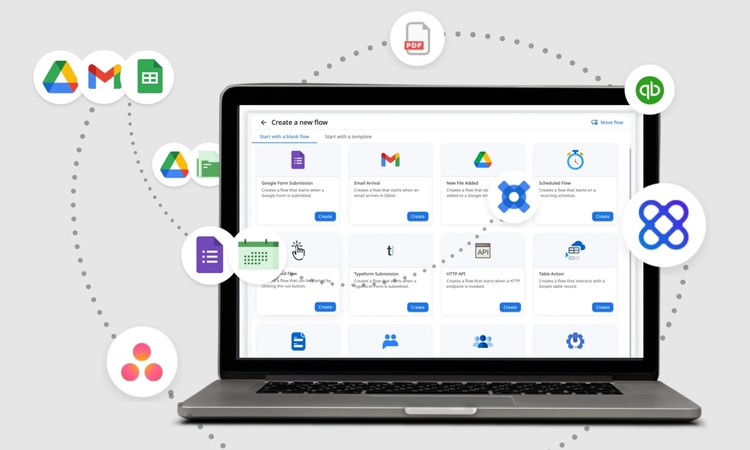
Part 1. What is Google Flow?
Google Flow is a cloud-based workflow automation tool that helps professionals design and manage a Google Workspace workflow. It allows users to create custom workflows for tasks like document approval, calendar management for meetings, email tracking, and cloud-based app integrations. This tool directly integrates with the Gemini AI agent for intelligent task management and content generation.
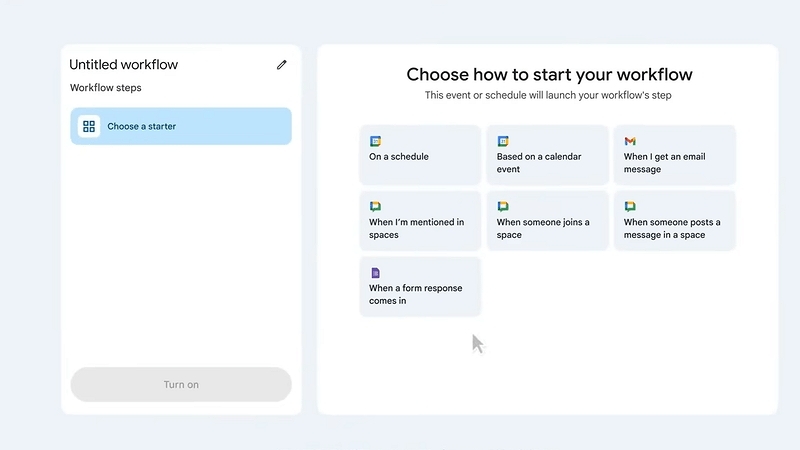
Google Flow integrates with the Google Workspace apps to automate workflows in Gmail, Google Calendar, Google Sheets, and other apps. This automation reduces repetitive tasks and complex sequences, such as tracking project status or routing email forums.
Google Cloud Workflows is a serverless automation service that sequences tasks and connects Google Cloud services, APIs, and custom logic in defined steps. It allows developers to handle errors and retry actions to automate scalable processes without maintenance.
Why Businesses and Individuals Are Adopting Google Flow?
Before moving forward, let's explore some reasons why businesses and individuals are using Google Flow for their tasks.
- 1.It saves time and reduces manual effort across everyday operations by automating routine tasks using AI.
- 2.Non-technical users can use visual no-code workflows to create advanced automation and improve business processes.
- 3.Integrates seamlessly with Google Workspace apps to enhance collaboration and information sharing for teams and solo users.
- 4.Creates training and demo visual presentations for businesses using the advanced Imagen 4 model.
- 5.AI-powered automation allows organizations to scale faster and adapt quickly to changing needs for long-term business growth.
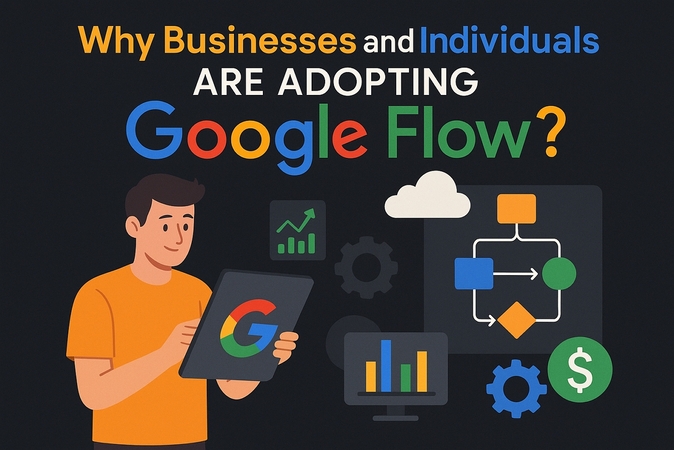
Part 2. Key Features of Workflow Google
Now that you know why businesses are adopting Google Process Flow, let's uncover some of its features that help them automate their business processes.
1. No-Code Visual Creation:Allows users to create and deploy powerful automations through a canvas and simple natural language prompts. Users can set up and customize workflows using visual blocks like conditions and actions without any code.
2. AI-Powered Automation:Gemini agents automate simple business workflows and multi-step processes needing research, analysis, and content generation. This helps summarize emails and draft documents to reduce manual intervention.

3. Triggers and Actions:Users can utilize multiple triggers and actions to build custom workflows that meet their requirements. This flexibility allows them to automate tasks across multiple applications.
4. Workspace Integration:Automations work across Workspace apps to move information safely without manual transfer. This unified integration makes workflows operate under organizational data policies and permissions.

5. Custom AI Agents:Enables businesses to train AI agents "Gems" using Gemini AI for tasks like reviewing policy documents and sorting customer support tickets. Gems perform these tasks under instructions to increase accuracy in workflow steps within the Google Drive flow.
6. Third-Party Apps Support:Cross-platform automation can be linked to third-party project management applications, e.g., Slack, Trello, and Notion. This makes it easier to connect Workspace with tools already used by teams.

Part 3. How to Set Up Work Flow Google
After exploring the key features of Google Flow, let's move on to how to set up a workflow in Google to track incoming feedback forms in simple steps.
Step 1.Start by logging in to your Google Account and accessing the Workspace Flows dashboard. Then, press the "+" icon to start a new automation.

Step 2.Next, choose the trigger "When a Form Response Comes in." Then, hit the "Add Step" option to proceed further.

Step 3.Select the "Post in a Space" action in the Chat section.

Step 4.Choose a Space and enter the message to be sent to the space in the "Message" section. Next, hit the "Turn on" button to save the automation.

Step 5.Test the automation to verify if the flow works properly.

Part 4. What Can You Do With Google Process Flow
Automation helps businesses simplify daily tasks like sharing files, updating records, and managing tasks through Google Form flow. Now, we'll see some use cases of Google Flow and how workflows connect across different Workspace apps.
- 1. Customer Feedback Prioritization: Google Flow automatically collects, summarizes, and prioritizes customer feedback forms with Gemini AI, then notifies teams in chat for further action.
- 2. Email Replies With AI Agents:Gems, AI-powered agents analyze incoming emails, generate responses, and send them through Gmail in the brand's personalized tone.
- 3. Tracks Specific Emails:Businesses set up flows that track emails from particular senders, label them, and notify users to take further action without filtering.
- 4. Automated Reviews and Approvals:Users set up a Google Form approval flow that routes documents for approvals, requests e-signatures, and posts updates across Workspace to speed up decision processes.
- 5. Sales and Onboarding Operations:Automate transitions like assigning leads from Forms to team members, set up onboarding steps in Sheets, and track progress status.
- 6. IT Operations and Incident Reporting:This platform designs workflows that monitor risky app activity or incoming support requests, trigger Gemini to analyze issues, and instantly alert IT teams for incident resolution.
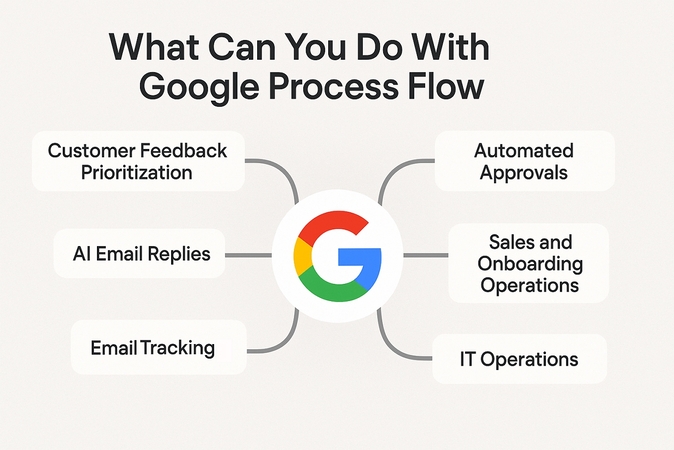
Pro Tip. Enhance Your Workflow with AI-Powered Image Quality
Now you completely know what Google Flow is and how it helps business automate their task with AI to reduce manual intervention. The credibility of reports and presentations depends on the visual quality, as a poorly made slide in a presentation flow can reduce trust and impact. This is where HitPaw FotorPea (formerly HitPaw Photo Enhancer) comes in, which enhances your blurred reports and makes your workflow output stand out and look professional.
Key Features
- 1.Enhances and upscales low-quality workflow output to ultra-high resolution up to 8K clarity.
- 2.Allows batch file processing to import and edit multiple workflow visuals at once.
- 3.Fixes noise within images using its dedicated Denoise Model.
- 4.Restores damaged photos and turns them into sharp and clear images.
- 5.Removes and replaces unwanted objects with creative backgrounds.
Detailed Guide on How to Enhance Your Workflow with FotorPea
Step 1. Launch The Tool and Select Enhance Photos Now
Launch the HitPaw FotorPea tool and hit the "Enhance Photos Now" button to proceed to the next window.
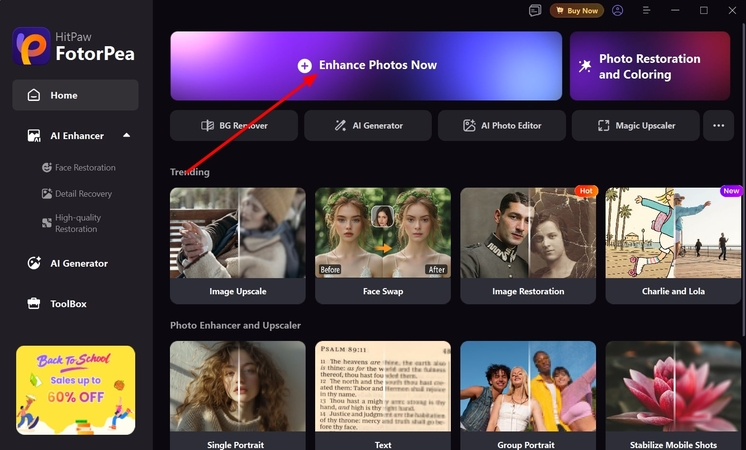
Step 2. Import Your Workflow Visual and Select Upscale Model
As you proceed, press the "+Add" button to import your workflow output, select the "AI Upscale" model, and click the "Preview" button to see your enhanced document.
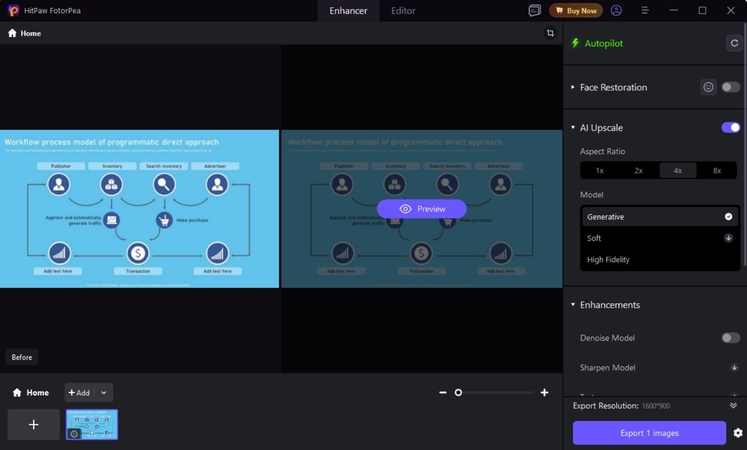
Step 3. Export the Improved Document
Next, press the "Export (x) Image" button on the same screen to save your enhanced document.
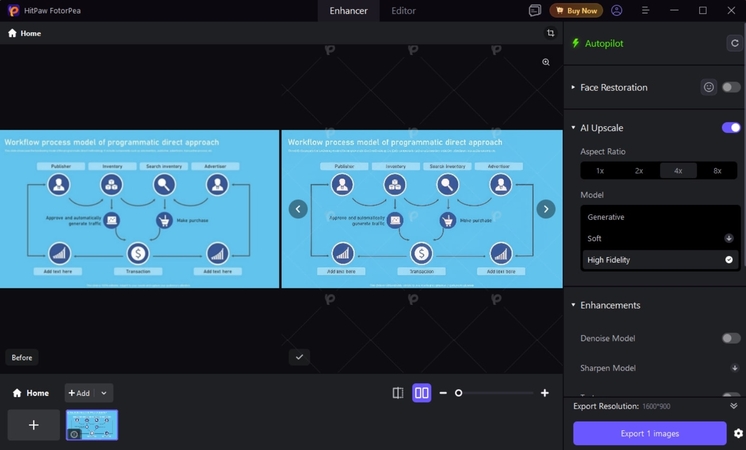
FAQs on Google Flow
Google Flow requires an active Google Workspace subscription, and it is not available for free for standalone use. Some advanced features and integrations may require additional charges, so users should check out Google Dialog flow pricing for details.
Yes, Google Flow supports integration with external applications like Slack, Trello, Confluence, and more. This allows users to automate workflows across non-Google apps using connectors and APIs.
Google Flow uses Google Workspace's enterprise-grade security, including encryption, access control, and compliance tracking. Sensitive data and workflows are protected through Workspace under security and organizational policies.
Google Flow does not need any coding skills, and users build and edit workflows in a visual or natural language prompt. Anyone familiar with Google Workspace can set up automations using intuitive drag-and-drop tools.
Conclusion
In conclusion, every business and corporate individual who needs professional growth has shifted their manual task to an automatic workflow in Google Workspace. Its AI-powered tools and deep app integration make it a scalable solution for repetitive processes. For a professional finish, combine Google Flow and HitPaw FotorPea to enhance visual reports, documents, and other workflow outputs to improve credibility and encourage professionalism across business communications.
Leave a Comment
Create your review for HitPaw articles




